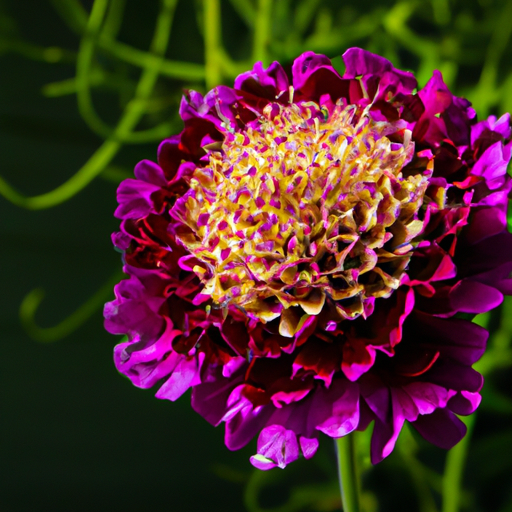Introduction
Scabiosa, also known as pincushion flower, is a beautiful and versatile plant that can add a touch of elegance to any garden. If you’re wondering how to grow scabiosa, you’ve come to the right place. In this comprehensive guide, we will walk you through the steps to successfully cultivate scabiosa in your own garden.
Choosing the Right Location
Scabiosa thrives in full sun to partial shade, so it’s important to choose a location that receives at least 6 hours of direct sunlight per day. The soil should be well-draining and rich in organic matter. Before planting, make sure to amend the soil with compost or well-rotted manure to improve its fertility.
Preparing the Soil
To prepare the soil for scabiosa, start by removing any weeds or debris from the planting area. Loosen the soil using a garden fork or tiller, breaking up any clumps and removing rocks. Incorporate a balanced organic fertilizer into the soil according to the package instructions to provide essential nutrients for the plant’s growth.
Planting Scabiosa
Scabiosa can be grown from seeds or transplants. If starting from seeds, sow them directly into the prepared soil in early spring or late fall. Lightly cover the seeds with a thin layer of soil and keep the area consistently moist until germination occurs, which usually takes around 10-14 days.
If using transplants, dig a hole slightly larger than the root ball of the plant. Place the transplant in the hole, making sure the top of the root ball is level with the soil surface. Backfill the hole and gently firm the soil around the plant. Water thoroughly to settle the soil and remove any air pockets.
Watering and Maintenance
Scabiosa prefers moderate moisture levels, so it’s important to water the plants regularly, especially during dry periods. However, be careful not to overwater, as this can lead to root rot. Aim to keep the soil evenly moist but not waterlogged.
To promote continuous blooming, deadhead the spent flowers regularly. This will encourage the plant to produce more blooms and extend the flowering period. Additionally, applying a layer of organic mulch around the base of the plants will help conserve moisture, suppress weeds, and regulate soil temperature.
Pest and Disease Control
Scabiosa is generally resistant to pests and diseases. However, occasional issues with aphids, spider mites, or powdery mildew may arise. Monitor your plants regularly and take appropriate action if you notice any signs of infestation or disease. In most cases, using organic insecticidal soap or neem oil will effectively control these problems.
Conclusion
Growing scabiosa can be a rewarding experience, as these beautiful flowers attract butterflies and other pollinators to your garden. By following the steps outlined in this comprehensive guide, you can successfully cultivate scabiosa and enjoy its vibrant blooms throughout the growing season. Remember to provide adequate sunlight, well-draining soil, and regular maintenance to ensure the health and vitality of your scabiosa plants. Happy gardening!




